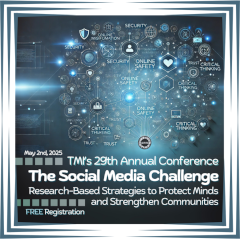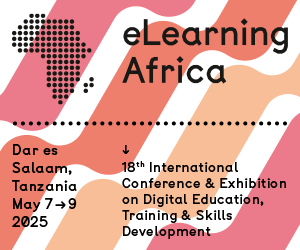Engaging the Millennial Generation
 Barcelona (E), November 2008 - Engaging the millennial generation puts a whole new set of demands on the learning provider regardless of the institution or organisation. Eva de Lera, Senior Strategist of the Office of Learning Technologies at Universitat Oberta de Catalunya (UOC) in Barcelona told CHECK.point eLearning about the project ENJOY Guidelines: 12 Guidelines for Designing Engaging eLearning Environments.
Barcelona (E), November 2008 - Engaging the millennial generation puts a whole new set of demands on the learning provider regardless of the institution or organisation. Eva de Lera, Senior Strategist of the Office of Learning Technologies at Universitat Oberta de Catalunya (UOC) in Barcelona told CHECK.point eLearning about the project ENJOY Guidelines: 12 Guidelines for Designing Engaging eLearning Environments.
What is the new set of demands to engage Gen Y?
Eva de Lera: Gen Y is challenging all known standards for interactive design. They are digital natives who like to explore the boundaries of new media, demanding simplicity and fun. Add to that a compulsive use of social networks and you have a formula to understand this powerful target.
Are there different demands in Spain than in other European countries?
Eva de Lera: Not really. I firmly believe that Gen Y is diluting the concept of national differences. Developments such as low-cost traveling, international branding, or the overall impact of the Internet are shaping up the figure of "digital consumers" who think and interact in similar way, irrespective of the color of their flags.
What are the 12 Guidelines like, which you designed for engaging eLearning environments?
Eva de Lera: The 12 Guidelines is a checklist of design elements that we believe need to be accounted for when designing an online learning environment. These are meant to be used as a reminder for those involved in the design process of a learning environment to take the emotionally related characteristics into account. The contents of the guidelines should not surprise anyone, yet most design processes do not include any tool or control in the process that looks after the emotional dimension of the users.
Elements such as control and personalization could easily be missed in a typical user- centered design process, which usually that ensures the system's usability, efficiency, and effectiveness, as well as the user's satisfaction with it. Most designers, however, don't try to identify motivational and emotional factors related to the users' experience with the system, which may end up working but not be fun to use or encourage users to continue using it.
ENJOY's 12 Guidelines are one of the tools that the Universitat Oberta de Catalunya has begun to use to ensure that the students' affective dimension is taken into account when designing the online learning environment. The effort is part of the Joy of Learning project, which aims at designing an engaging and motivating eLearning experience.
How can schools, universities, and companies prepare for these demands?
Eva de Lera: I would suggest that schools, universities, and companies listen to and observe the new generation of learners to ensure that they always understand what the learners are experiencing and how are they experiencing it. I would also recommend that they assure that the students' or users' affective and social dimensions are included in the design and development processes.
ENJOY: 12 Guidelines for designing engaging eLearning environments
- Personalization - The environment must make the student feel like a person and not like a user. Communication strategies must be used that are more personal, rely on a common language, and offer options for the user to participate in this environment.
- Identity - Use real images to help students identify with the values and the community in a quicker and more efficient way.
- Brand - Ensure that the brand and the brand values are reflected throughout the virtual environment to reinforce the relationship between the student and the institution.
- Community - Offer options to communicate, relate, and participate. Make them visible and easily accessible.
- Surprise - Introduce positive surprise elements or special events in the initial entry pages or in strategic locations to make the students feel that they are part of a creative and dynamic community.
- Innovation - Integrate innovative elements in the virtual environment, things that students may begin hearing or reading about in the media and other trend environments.
- Zen - Ensure that there is not an overload of text on the screen and that white spaces as well as photographic or graphic elements are used. Avoid unnecessary noise.
- Search - Provide shortcuts for students who have little time which ensure that they can find the information they need by doing a simple search.
- Clarity - Use lively and bright colors to facilitate interaction, reading, and information visualization.
- Situation - Ensure that the student quickly recognizes the structure or map of the environment in a glimpse, without needing to scroll.
- Aesthetics - Ensure a consistent "look" throughout to help guide the students through their tasks and objectives.
- Recognition - Use standard icons and symbols that can be understood easily and quickly without requiring alternative text or an extra click to "get" it.
Session GEN23
Eva de Lera: "ENJOY Guidelines: 12 Guidelines for Designing Engaging eLearning Environments"
Thursday, December 4th, 2008, 14:15 - 15:45, Charlottenburg II










